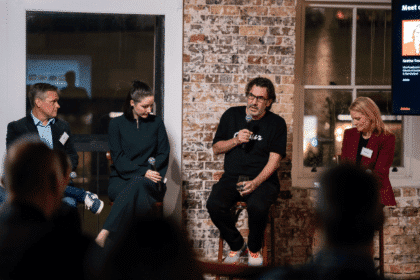Influencers are the new powerhouses in driving stock off shelves, but brands are yet to find the right recipe for successful collaboration, according to Guillaume Deront of Gleam Futures @ The Story Lab (pictured below). Here, he argues that marketers need to look beyond purely targeting an audience and channel their energy towards building long-term collaborative relationships.
Australia punches above its weight when it comes to creativity. There are about 80 local channels that have reached the one million subscribers milestone on YouTube, a huge feat considering the size of our population. Brands have more choice than ever to partner with the right influencers and grow their social presence. In fact, the future of influencer marketing lies in a brand’s ability to build long-term partnerships and to invest resources to establish and co-create content across various formats and platforms. Let’s look at key areas of development:
Build long-term relationships with influencers
The ecosystem of digital-first talent is becoming increasingly fragmented: ‘YouTube celebrities’, ‘micro influencers’, ‘traditional celebrities’, ‘athletes’ etcetera. Ultimately the question is: who is the right opinion leader for your brand? In fact, there are many important pieces of the puzzle which should all be included in a holistic influencer marketing strategy.
Influencer relationship management (IRM) has emerged as a trendy marketing practice. Building brand value among select opinion leaders, building collaborative relationships and facilitating the co-creation of content is key. In doing this, the objective here is to grow the share of voice and sentiment across online mentions. Furthermore, the convergence with CRM programs enables us to track ROI-driven metrics.
Micro or niche influencers have proven to be a cost-effective strategy for brands to partner with as reliable thought leaders for tactical campaigns primarily on Instagram and to access professional quality content that can then be repurposed (be on the lookout for fake influencer scams).
Top-tier talent offers brands credibility, authority and trust. Their huge fanbase across platforms is proof of their ability to engage and convey a message to a larger audience. Their success is also due to their ability to develop recognisable and timeless intellectual properties that offer brand partners a broader range of monetisation opportunities than ever before (for example, Pia Muehlenbeck, Rachel Aust, Jessica Holsman).
Be creative and co-create video content with influencers
Great content entertains, educates or invokes some level of emotion. Consumer attention is now a scarce commodity. In fact, you are probably more likely to remember a video you watched a few days ago over pictures you recently scrolled through in your feed. It is crucial for brands to get the attention of their target audience across multiple formats, and especially online video. Eighty per cent of the global internet traffic will be video driven in 2020 and you surely don’t want to miss the boat.
Some big brands – amongst them Taco Bell, Brita, Vodka Cruiser, and Audible – have had the foresight to make video an essential part of their digital marketing strategy, and the results speak for themselves. In these instances, brands leverage the expertise and knowledge of content creators to build compelling online video strategy. Truth is it is not that hard to get started and digital-first talent regardless of the size of their audience are genuine individuals who are willing to share their secrets, build long-term friendship with brands and co-create engaging branded pieces of content.









